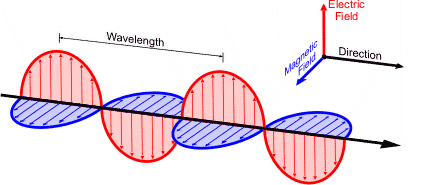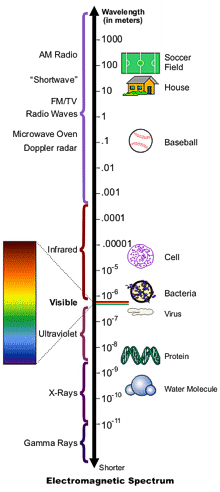
Electromagnetic waves are a form of radiation that travel though the universe. They are formed when an electric field (Fig. 1 red arrows) couples with a magnetic field (Fig.1 blue arrows).
Both electricity and magnetism can be static (respectively, what holds a balloon to the wall or a refrigerator magnet to metal), but when they change or move together, they make waves. Magnetic and electric fields of an electromagnetic wave are perpendicular to each other and to the direction of the wave.

Unlike sound waves, which must travel through matter by bumping molecules into each other like dominoes (and thus can not travel through a vacuum like space), electromagnetic waves do not need molecules to travel. They can travel through air, solid objects, and even space, making them very useful for a lot of technologies.
When you listen to the radio, connect to a wireless network, or cook dinner in a microwave oven, you are using electromagnetic waves. Radio waves and microwaves are two types of electromagnetic waves. They only differ from each other in wavelength – the distance between one wave crest to the next.
While most of this energy is invisible to us, we can see the range of wavelengths that we call light. This visible part of the electromagnetic spectrum consists of the colors that we see in a rainbow – red, orange, yellow, green, blue, indigo, and violet. Each of these colors also corresponds to a different measurable wavelength of light.
Waves in the electromagnetic spectrum vary in size from very long radio waves that are the length of buildings to very short gamma-rays that are smaller than the nucleus of an atom.
Their size is related to their energy. The smaller the wavelength, the higher the energy. For example, a brick wall blocks the relatively larger and lower-energy wavelengths of visible light but not the smaller, more energetic x-rays. A denser material such as lead, however, can block x-rays.
While it’s commonly said that waves are "blocked" by certain materials, the correct understanding is that wavelengths of energy are absorbed by the material. This understanding is critical to interpreting data from weather satellites because the atmosphere also absorbs some wavelengths while allowing others to pass through.


